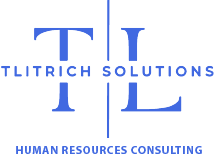Performance reviews can often feel like a daunting task, both for employees and employers. However, they are crucial for career growth and organizational success. One way to make these reviews more effective and meaningful is by setting SMART goals. At TLitrich Solutions, we believe that clear, structured goals are the key to driving performance and fostering professional development. Here’s a comprehensive guide on how to train employees and managers to set SMART goals for their performance reviews.
What Are SMART Goals?
SMART is an acronym that stands for Specific, Measurable, Achievable, Relevant, and Time-bound. This framework ensures that goals are clear and reachable within a defined timeframe. Let’s break down each component:
- Specific: Goals should be clear and specific, answering the questions of who, what, where, when, and why. A specific goal leaves no room for ambiguity.
- Measurable: It’s important to have criteria for measuring progress and success. This might include metrics, milestones, or other indicators that can track progress.
- Achievable: While goals should be challenging, they must also be attainable. Setting realistic goals prevents frustration and burnout.
- Relevant: Goals should align with broader business objectives and be relevant to the employee’s role and career aspirations.
- Time-bound: Every goal needs a target date to create urgency and ensure timely progress. Setting deadlines helps maintain focus and motivation.
Examples of SMART Goals
To illustrate how to set SMART goals, here are a few examples tailored to different roles within an organization:
- Marketing Specialist:
- Specific: Increase the company’s social media following.
- Measurable: Achieve a 20% increase in followers on Instagram and LinkedIn.
- Achievable: Leverage current content and engage with followers through regular posts and interactions.
- Relevant: Aligns with the company’s strategy to boost brand awareness.
- Time-bound: Accomplish this within the next six months.
- Sales Executive:
- Specific: Improve sales performance.
- Measurable: Increase monthly sales revenue by 15%.
- Achievable: Focus on upselling and cross-selling to existing clients, and identify new prospects.
- Relevant: Supports the company’s revenue growth targets.
- Time-bound: Achieve this within the next quarter.
- HR Manager:
- Specific: Enhance employee engagement.
- Measurable: Achieve a 10% increase in employee engagement scores in the next survey.
- Achievable: Implement new initiatives like regular team-building activities, feedback sessions, and recognition programs.
- Relevant: Aligns with the goal of improving workplace culture.
- Time-bound: Implement these initiatives over the next six months and measure the impact in the next employee engagement survey.
- Trade Worker (e.g., Electrician) in a Small Family-Run Business:
- Specific: Improve the efficiency of service calls.
- Measurable: Reduce the average time spent on each service call by 15%.
- Achievable: Implement a standardized checklist and ensure all tools and parts are prepared in advance.
- Relevant: Enhances customer satisfaction and increases the number of daily service calls.
- Time-bound: Achieve this reduction within the next three months.
Tips for Setting SMART Goals
- Align with Company Objectives: Ensure that your goals are aligned with the overall objectives of your organization. This creates a sense of purpose and ensures that your efforts contribute to broader business goals.
- Be Realistic: While it’s good to aim high, setting unattainable goals can be demotivating. Be realistic about what can be achieved within the given timeframe and resources.
- Review and Adjust: Goals aren’t set in stone. Regularly review your progress and be prepared to adjust your goals if necessary. This flexibility ensures that you remain on track even when circumstances change.
- Seek Feedback: Don’t hesitate to seek feedback from your team when setting your goals. Their insights can help you refine your goals and ensure they are truly SMART.
Setting SMART goals is a powerful way to enhance performance reviews and drive professional growth. By being Specific, Measurable, Achievable, Relevant, and Time-bound, you can create clear and attainable objectives that lead to meaningful progress. At TLitrich Solutions, we are committed to helping employees and businesses thrive through effective goal setting and strategic HR practices. Start setting your SMART goals today and take the first step towards achieving your professional aspirations.
